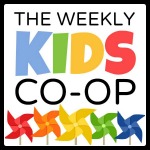Counting
We count everything. I always counted things when I was bored as a child - especially on a long road trip. I would count cars, lamp posts, exits, anything I saw. I just naturally find myself counting things, and now I count out loud so M can listen and join in with me. We count how many times I push her on the swing, how much food is on her plate, how many flowers she picked, how much Halloween candy she collected, how many rungs are on a ladder or how many hops it takes to reach the other side in hopscotch.Sometimes she will count as high as she can until she doesn't know the next number, then I will pick up. Sometimes we alternate - I count evens and she counts odds. Sometimes we count together, or repeat after one another. Recently she has started counting larger numbers. She doesn't know all of the numbers up to 100 yet, but she understands that numbers follow a pattern. I love listening to her count, especially when she gets caught up in what she's counting and throws in a "twenty-eleven."
Soon we'll start skip counting - counting by twos or threes or tens. It's a great precursor for learning multiplication.
Division
Multiplication and division do not have to be scary concepts. They also don't need to be all about memorization either. We practice grouping as a form of division: How many groups of two can we make with the ten marbles we have? We also talk about sharing - if three friends are coming over and you have six cookies, how many cookies can each friend have? (These same situations could be used to practice multiplication, of course. If three friends are coming over and you want to have two cookies for each friend, how many cookies do you need?)Here you can see M counting out the number of fruit snacks in a bag, and dividing them into equal groups to share with me. Of course she checked her work to make sure it was fair!
Fractions
Fractions and percentages also seem to intimidate a lot of people, yet they are found everywhere! Calculate the tip on your restaurant bill, figure out how much you'll save (or how much you'll need) when merchandise is on sale, determine how much you're actually paying on your house (or car or credit card puchases) when you add in interest charges (ouch!).M has been really interested in money lately, especially coins (everything on Mickey Mouse Clubhouse costs coins). I gave her a handful of coins and had her sort them into groups. We talked about what they looked like and how she could tell them apart. I told her the names of the coins and how much they were worth. Then we talked about how many of each coin was equal to a dollar (one penny is 1/100th of a dollar, one nickel is 1/20th of a dollar, one dime is 1/10th of a dollar, and one quarter is 1/4th of a dollar).
She likes the quarters the best (smart girl), and I showed her different ways to count them. I also drew some pictures and wrote out the fractions on her easel and showed her the number of quarters that corresponded to each fraction. We talked about why two quarters was the same as 1/2 (she already somewhat understands the idea that half means two equal parts).
Measurements
M has always been interested in measuring things. She wants to know how tall things are and how much they weigh. She liked playing with my husband's tape measure so much that we bought a small one for her. She loves helping to measure ingredients when we cook, and has her own set of measuring cups in her play kitchen.I like to get M involved in helping me measure whenever I can. I have a small postal scale that I use to weigh packages so I can ship from home, and she helps me weigh things on the scale (which is also a good opportunity to talk about how postage is calculated). We weigh fruits and vegetables at the grocery store (even though I'm not usually looking for a certain weight). We weigh and measure ourselves at home and when we go to the doctor.
Shapes and Patterns
We talk about shapes all the time, and not just the normal circle/square/triangle, but hexagons and pentagons and trapezoids and quadrilaterals. I don't dumb things down. I want her to be exposed to the proper vocabulary now so she's not intimidated by the "big words" later. We also love this Melissa & Doug Shapes Sound PuzzleM is also really interested in patterns (which she pronounces pat-er-rins). I'm not sure that she totally gets the idea of the repetitive nature of patterns, but she likes putting different things in order and naming the objects and calling it a pattern. You can see her marker "pattern" that she is creating below.
I try to find lots of opportunities to nurture this interest, so I point out patterns in nature or on packaging or store signs. We color different patterns (like on her castle) or line up her animals or play foods in different patterns (fruit, vegetable, fruit, vegetable, etc.).
So tell me, how have you "taught" math through everyday experiences?
Disclaimer: This post contains Amazon Affiliate links for your convenience.
Linking Up With:
Hip Homeschool Hop!
Tuesday Tots






















.jpg)










































